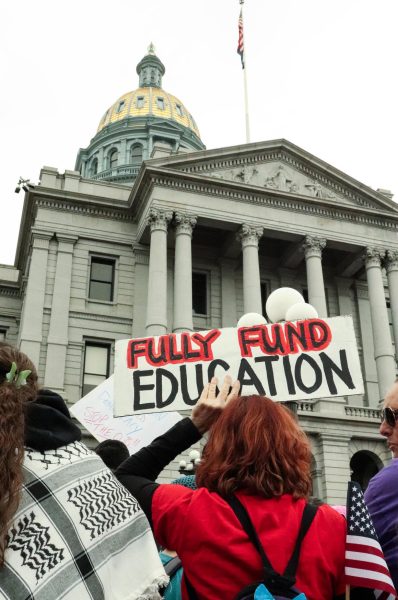Part One: Reporting and Investigation
This is the first part in the Banner’s series on sexual abuse.
The reason why sexual assault is uncomfortable to talk about is the exact same reason why we need to talk about it.
When we don’t talk about it, misinformation and uneasy feelings spread and make the whole conversation, or lack thereof, alarming and unsafe. Therefore, it’s time that The Royal Banner takes on the topic of consent and sexual assault to inform and, hopefully, start the conversation within our school.
This will be the first of a several-part series about sexual assault. Later, we’ll address what students have done to prevent sexual assault, the culture surrounding this issue, where students can find support and what students have done when enduring a sexual assault. This part is about BVSD’s protocols for dealing with and investigating a sexual assault.
With the rapid rate at which rumors spread, it’s nearly impossible to get 100% accurate information. Inaccurate information can be detrimental. If rumors spread, and it’s inaccurate, the alleged victim can get harassed and the alleged perpetrator’s reputation can be ruined.
There is certain policy that the school must follow when presented with a case of reported sexual assault. Principal Don Stensrud explained the details of what actions he must take in these situations.
First, it’s important to note that if the reported assault is not at all related to school, with the exception that it happened between Fairview students, there is not much that the school can do about it, Stensrud explained. It is mandatory that the school hand the case over to the police for investigation. Legally, all the school administration can do is provide the alleged victim with counseling and report the case over to the police, which they are legally obligated to do. The victim, however, is not obligated to talk to the police or press charges.
“They don’t want to tell the police because they don’t want to be re-victimized”
“Girls will come and tell our mental health worker or tell a counselor or tell an administrator, and then we always encourage them to tell the police. And I understand where young ladies are coming from, they don’t want to tell the police because they don’t want to be re-victimized during the investigation. But, it also ties everyone’s hands,” said Stensrud.
If the perpetrator contacts the victim regarding the assault at school after the assault occurred, the administration can take action, as it is a Title Nine violation.
“A lot of times we’ll tell victims, ‘get a restraining order if you feel uncomfortable.’ Because anyone can get a 21 day temporary restraining order for virtually anything. So that usually lays the groundwork for us to start dealing with the perpetrator,” said Stensrud. “That’s where it seems like the school is not doing anything, and in essence, we aren’t, but that’s not because we don’t want to, it’s because we can’t.”
However, if the assault occurred at school, both the administration and the police do an investigation. From the administration’s side, they will look at the security cameras and talk to the witnesses with the intent of finding the truth of what happened.
If the assault happened at school or during a school activity, Stensrud does not need the same burden of proof that the police do to take action against the perpetrator. He can remove them from school to protect the victim.
Not every investigation is going to generate clear results. If this happens, the administration makes sure that the alleged victim and the alleged perpetrator do not have any contact. If there is enough evidence to bring a charge, some families can obtain a restraining order, which can result in a couple of different outcomes. The administration changes the class schedules of the alleged victim and the alleged perpetrator in the case of a no-contact restraining order. The alleged victim and the alleged perpetrator will not talk to each other, and neither will their friends.
If the restraining order states that the alleged victim and the alleged perpetrator can not be within 100 feet of each other, the administration will move the alleged perpetrator to a different school.
In the case that the police file a charge, the administration automatically removes the perpetrator as per district policy. The outcome of that situation varies on whether the action was a misdemeanor or felony. If the alleged perpetrator is charged with a misdemeanor, often there will be a restraining order where the alleged perpetrator will go to a different high school such as Boulder High or Monarch while the trial is ongoing, Stensrud explained. If it is a felony, however, for the time that the trial is being pursued the alleged perpetrator will most likely be moved to online school.
That makes the alleged victim feel more comfortable because they are moved away from their alleged assaulter. For the alleged perpetrator, they are to some extent guilty before they have been proven innocent or guilty. Should they go to court and be found innocent, they are free to return to school, but scrutinized by their peers.
8 out of 136 accusations of sexual assault are determined to be false.
However, the likeliness of a false accusation is minute. According to a 2010 U.S. study done by David Lisak, Lori Gardinier, Sarah C. Nicksa and Ashley M. Cote, 8 out of 136 accusations of sexual assault are determined to be false. That’s 5.9 percent.
Stensrud thinks that a societal problem surrounding this issue is that the victims don’t feel safe enough to share their story.
“We’ve got to get somewhere at our society where there is the ability and the safety for young ladies and young men to share their stories of being sexually assaulted, protect them, get legal actions taken care of,” said Stensrud. “That’s the only way we’ll prevent it because right now, if you’re sexually assaulted and you don’t tell anybody, that young man or whoever sexually assaulted you feels they have license to do it again.”
He explained this further with an example from seven to eight years ago. According to Stensrud, a senior girl was raped at a party and made a phone call to the police. The senior boy who assaulted her was sentenced. They found that he had assaulted multiple other victims by getting them intoxicated. Because they didn’t report it, under the impression that it was their fault because they were intoxicated, it allowed the perpetrator to believe that he should do it again. Obviously, it is not the silent victims’ fault for the future wrongdoing and lack of moral integrity of the perpetrator, but by reporting their story, preventing future incidents is a possibility.
The issue of reporting is a complicated one, however. Once victims go public with their story, they can get blamed and unfairly treated. (We will be talking about this victim blaming culture later in the series.)
The school administration works with Blue Sky Bridge, which attempts to create a safe environment for abuse victims. The administration provides the victim and their family support through Blue Sky Bridge’s counselors and Fairview’s mental health worker.
“We do everything we can.”
“Do sexual assaults happen between high school kids? Yeah, they do. Is it only Fairview? No. It’s every high school. And will we remove kids when we can? Absolutely,” said Stensrud. “We do everything we can to protect the young lady or the young man who’s been sexually assaulted.”
National sexual assault hotline: 1-800-656-4673
Your donation will support the student journalists of Fairview High School - CO. Your contribution will allow us to purchase equipment and cover our annual website hosting costs.

Ava Svolos is a Senior and this is her third year on the Royal Banner staff. She enjoys traveling, tennis, and being with her dogs. She is excited to be...













Peg Shippert, LPC • Dec 3, 2019 at 9:25 AM
This article is focused on what happens after a specific sexual assault is reported, which is important to understand. I encourage you to write a companion piece discussing what Fairview is doing in terms of *prevention* of sexual assault and countering rape culture. A great place to start might be to look into whether Fairview is implementing the three main suggestions from the study discussed in this article: https://www.edweek.org/ew/articles/2018/10/05/stop-pretending-sexual-assault-cant-happen-in.html. Those suggestions, briefly, are:
1. Implement evidence-based effective interventions
2. Implement school-wide interventions, not merely classroom lessons
3. Conduct staff training
While it seems to be true that sexual assault is common at most high schools, we don’t actually know whether it happens at the same rates at every high school. There is no high school equivalent of the Clery Act, which requires federally funded colleges to report sexual assault statistics. There is evidence that schools which implement prevention programs, such as those outlined above, can significantly reduce the incidence of sexual assault. Is Fairview one of them?